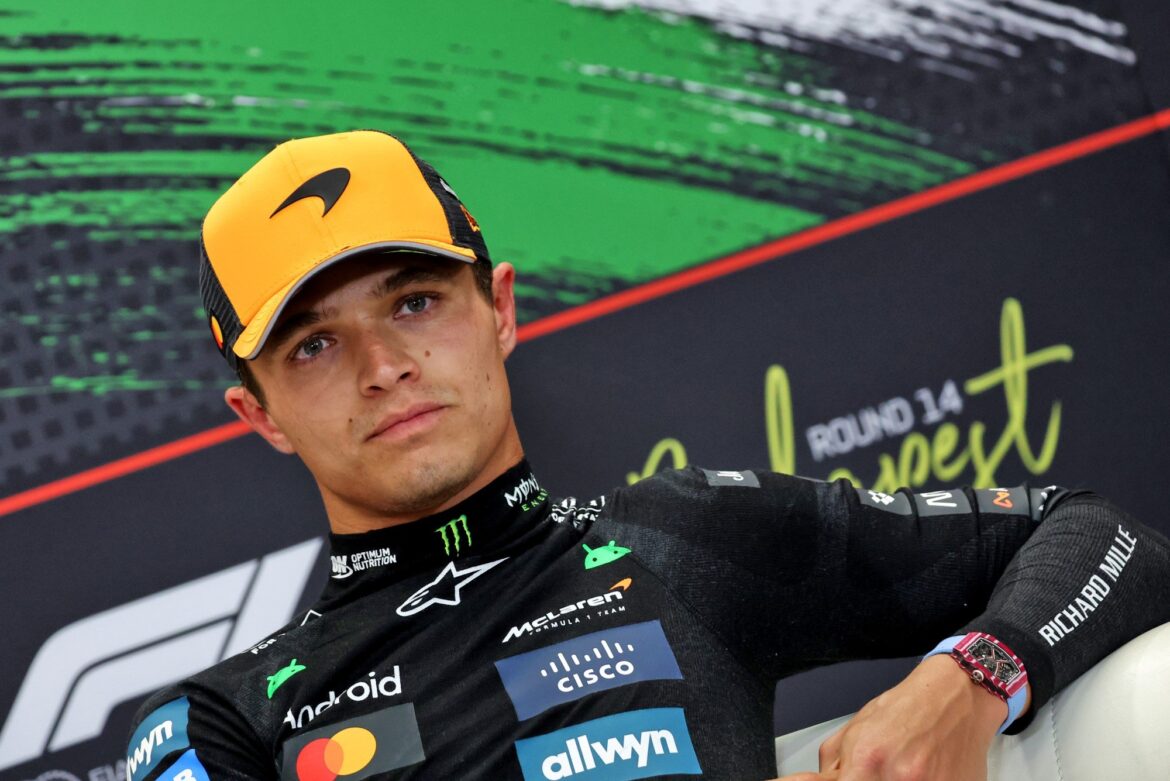McLaren’s Strategic Shift in the 2025 Hungarian Grand Prix
In the fast-paced world of Formula 1, team strategies can make or break a race. During the 2025 Hungarian Grand Prix, McLaren showcased an impressive adaptability that ultimately led to Lando Norris securing his fifth victory of the season. Team principal Andrea Stella provided insights into the team’s decision-making process and how they adjusted their strategy mid-race.
The Initial Strategy: Two-Pit Stops
Before the race, McLaren had mapped out a plan that involved both of their drivers making two pit stops. This strategy was based on their analysis of the track conditions and tire performance. The team believed that one pit stop would not be feasible under race conditions, given the expected tire degradation and the challenges of overtaking on the tight and twisty Hungaroring circuit.
As the race unfolded, however, the situation changed. Lando Norris, starting from the third position on the grid, experienced a challenging start and found himself dropping two places shortly after the lights went out. Despite this setback, the team remained focused on optimizing his performance throughout the race.
A Bold Decision: One-Pit Stop for Lando
As the race progressed, McLaren began reevaluating their approach. The decision to bring Norris in for just one pit stop—where they had initially planned for two—proved to be a pivotal moment in the race. Stella explained that the team was initially hesitant about the viability of a one-stop strategy but adjusted their thinking as they monitored Norris’s performance on track.
Norris managed to set competitive lap times even with his tires showing signs of wear. This prompted the team to reconsider their earlier strategy. "When we extended the race, keeping Lando out, we didn’t think a single stop was achievable. But credit to Lando for putting in some excellent sectors and lap times on relatively old tires," Stella noted. This adaptability in strategy is a hallmark of successful teams in Formula 1, where conditions can change rapidly.
The Turning Point: Competitive Lap Times
The turning point in McLaren’s strategy came when they observed that Norris was able to maintain a pace that was competitive, even as the race neared its midpoint. The decision to keep him out on track rather than bringing him in for an early stop was a calculated risk. As Stella stated, "Somehow, we convinced ourselves that a single stop was starting to make sense as we progressed through the first stint."
This level of adaptability is critical in a sport where teams must be ready to pivot their strategies based on real-time data and driver feedback. By extending Norris’s stint, McLaren not only conserved time in the pits but also allowed him to capitalize on his tire management skills.
Overcoming Challenges: The Pursuit of Leclerc
While McLaren adjusted their strategy for Norris, they were also focused on the wider race dynamics, particularly their competition. The initial goal was to overtake Charles Leclerc, a formidable opponent who had been driving consistently well throughout the race. Stella mentioned the team’s intention to first pass Leclerc and then evaluate their strategy for the remainder of the race.
The planning was not just about one driver but involved both Norris and his teammate. The team had to balance the strategies of both drivers while keeping an eye on the overall championship standings. With Norris chasing Leclerc, the team knew that a successful overtaking maneuver could significantly impact the race’s outcome.
The Impact of the Victory on the Championship
With Norris’s victory, the stakes were raised in the championship battle. He reduced the gap to Oscar Piastri, the current championship leader, to just 11 points. This win was not only a personal achievement for Norris but also a crucial moment for McLaren in the championship race. The strategic shift to a one-stop race for Norris proved to be the right call and underscored the importance of flexibility in racing strategies.
The Importance of Team Communication
Effective communication within the team is essential in Formula 1, especially when strategies need to be adjusted on the fly. Stella highlighted how important it was for the team to remain in constant contact with Norris during the race. The driver’s feedback on tire performance and track conditions played a significant role in shaping the team’s decisions.
The relationship between the driver and the pit wall is a dynamic one, requiring trust and quick thinking. Norris’s ability to communicate effectively about his car’s performance allowed the team to make informed decisions that ultimately led to victory.
Lessons Learned from the Race
Every race in Formula 1 is a learning opportunity, and the Hungarian Grand Prix was no exception. McLaren’s experience demonstrated the value of remaining adaptable and responsive to changing conditions. The ability to pivot from a two-stop strategy to a single stop based on real-time performance data illustrates the critical nature of decision-making in high-pressure environments.
Stella’s reflections on the race emphasized that the team did not enter the race with a preconceived notion of how many pit stops each driver would make. Instead, they were prepared to adapt to the evolving circumstances on the track. This mindset is crucial in a sport characterized by its unpredictability.
Conclusion
The 2025 Hungarian Grand Prix was a testament to McLaren’s strategic capabilities and the importance of adaptability in Formula 1. By shifting from their initial two-stop strategy to a one-stop plan for Lando Norris, they not only achieved victory but also made significant strides in the championship standings. As the season progresses, the lessons learned from this race will undoubtedly influence their approach in future competitions.
The ability to respond to changing conditions, make informed decisions, and maintain strong communication between drivers and the team is what sets successful teams apart in the competitive landscape of Formula 1. McLaren’s performance in Hungary serves as a reminder of the intricate dance of strategy and execution that defines this thrilling motorsport.
